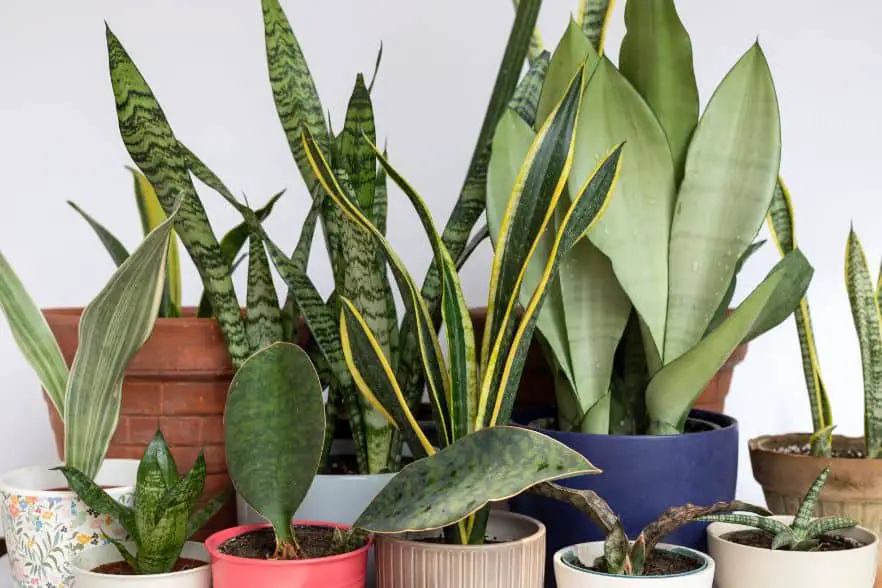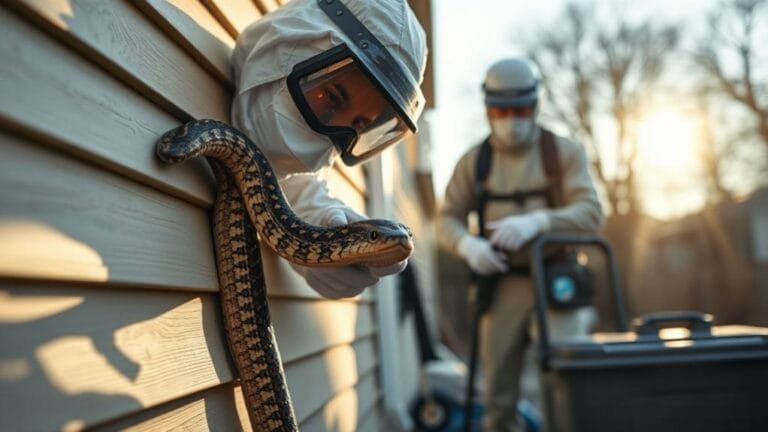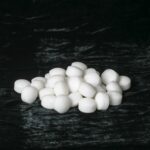Snakes are often seen as dangerous, intrusive pests. However, there are several reasons why you might want to keep snakes out of your garden.
Some snakes are venomous, and others can damage plant life. In addition, snakes can be a nuisance, and many people simply fear them. Fortunately, some plants can help to keep snakes away.
Some of these plants emit strong odors that snakes find unpleasant, while others produce toxins that can harm snakes.
Still, others have physical characteristics that make them difficult for snakes to navigate. By planting some of these snake-repelling plants in your garden, you can help to keep your property snake free.
1) Marigolds
Table of Contents
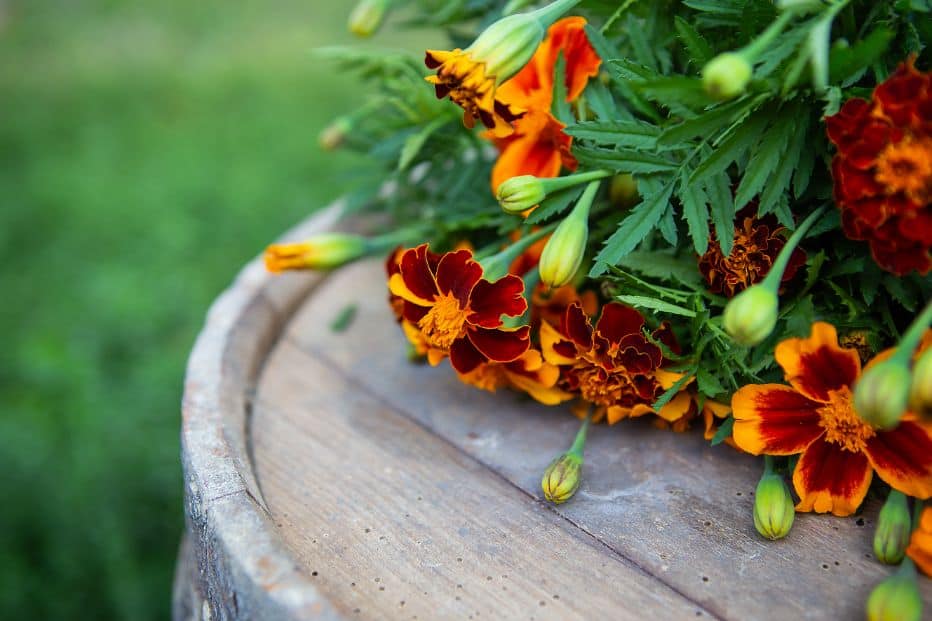
Marigolds are a great way to deter snakes. The smell of these plants is said to be abhorrent to snakes, making them easy to grow.
Marigolds can be planted in pots or in your garden, and they will help keep the slithery critters at bay.
If you have a problem with snakes in your yard, consider planting marigolds as a natural snake repellent and effective solution.
2) Lavender

Lavender is not only a beautiful plant, but it can also be used to deter a variety of pests.
Snakes, ants, mice, and mosquitoes are all known to stay away from lavender, making it an ideal choice for those looking for a natural way to keep their home pest-free.
Lavender oil can also be used as an effective repellent, and the plant can be placed in strategic locations around the home to achieve maximum protection.
In addition to its pest-deterring properties, lavender is also known for its calming effects.
So not only will your home be free of unwanted guests, but you’ll also enjoy the pleasant scent of lavender as you relax in your peaceful oasis.
3) Lemon Grass

Lemongrass is a tropical plant that has a strong lemon scent. It helps to repel snakes and can be planted in pots or gardens. Lemongrass can also be grown indoors.
The essential oil citral causes the lemon scent of lemongrass. Citral is also a flavoring agent in food and beverages and fragrance in soaps and cosmetics.
In addition to its repellent properties, lemongrass is also used in Traditional Chinese Medicine to treat stomach disorders and colds.
Lemongrass essential oil can also be used in aromatherapy to promote relaxation and calm nerves. Whether you’re looking to keep snakes out of your garden or enjoy the fresh lemon scent, lemongrass is an excellent choice for your home or garden.
4) Mint

Mint is a plant that grows in the shade. It’s a perennial, which means it will come back year after year. Mint is also a great plant that repels snakes away.
It grows well in containers and can be grown indoors. Mint likes moist soil, so be sure to water it regularly. Cut it back to the ground when pruning mint to promote new growth. You can also divide mint plants to create new ones.
Just dig up the plant, divide it into sections, and replant it in moist soil. Mint is a versatile plant that can be used in many different dishes.
Its refreshing flavor goes well with chicken, fish, lamb, and vegetables. You can also use mint to make teas, iced drinks, and desserts.
So whether you’re looking for a tasty addition to your repertoire or a way to keep snakes at bay, mint is a great choice.
5) Snake plant
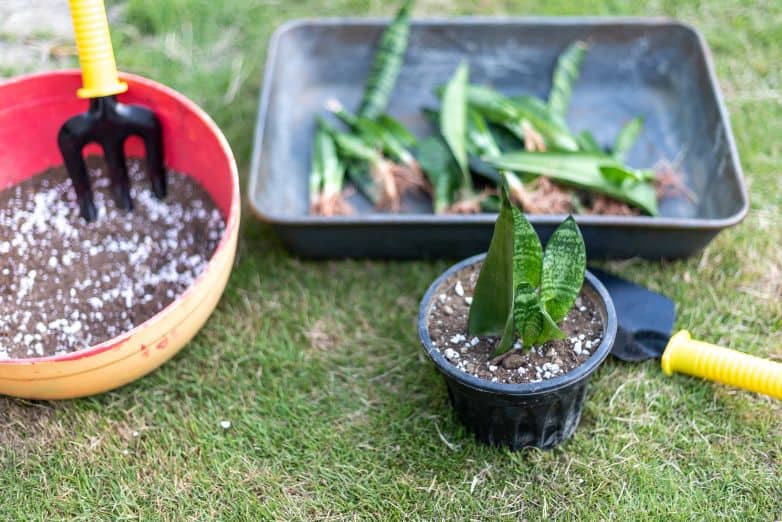
The snake plant is an excellent choice for those who want an easy-to-care-for houseplant that can tolerate low light conditions. This tough plant is known by its mother-in-law’s tongue and is said to help keep snakes at bay.
In addition to its purported snake repellent qualities, the snake plant is also known for having purifying qualities, making it an excellent choice for improving indoor air quality.
Snake plants are native to Africa and Asia and are evergreens, meaning they stay green all year round. These cultivated plants can grow up to four feet tall and prefer well-drained soil and either full sun or partial shade.
One of the best things about snake plants is that they are drought tolerant, so you won’t have to worry about overwatering them. Snake plants can be propagated by dividing the rootball or by planting the seeds.
6) Mugwort
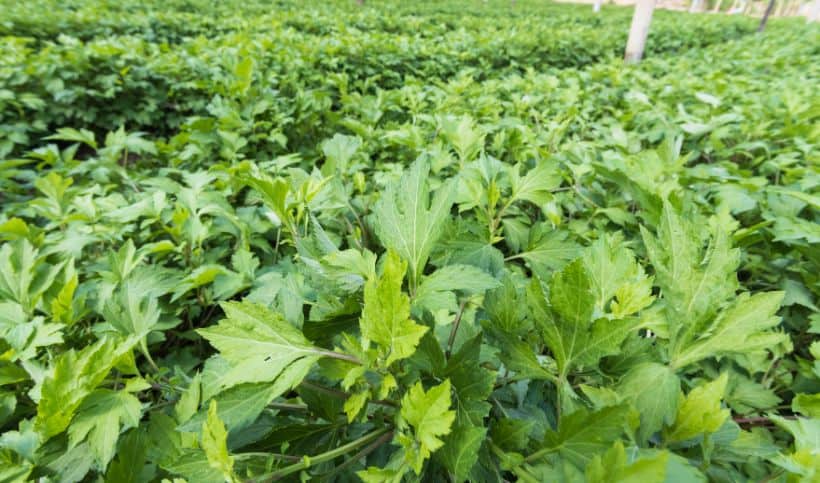
Mugwort is a member of the daisy family. A perennial plant, it grows to about 3 feet tall.
- It has grayish-green leaves and yellow flowers.
- It is native to Europe and Asia.
Mugwort is a good deterrent for snakes and pests.
Mugwort has many uses. In England, it was once used to stuff mattresses. In Asia, it is used in Traditional Chinese Medicine. Mugwort is used to flavor food and beer. It can also be used as an insect repellent.
Mugwort can grow in wastelands, near roads, and on the edges of fields. It prefers full sun but will grow in partial shade. It is easy to grow from seed or divisions of the root ball. Once established, mugwort is hardy and drought tolerant. It can become invasive, so it is best to plant it in an area where it can spread freely.
7) Onion and Garlic

Onion and garlic are natural pesticides. They repel snakes, rodents, spiders, and other insects. They are easy to grow and can be planted in pots or on the ground.
They are a good deterrent for other pests as well. They can be grown indoors or outdoors.
Onions and garlic can be chopped and placed in an infestation area. The pungent smell will deter pests from entering your home.
Chances are, if you have an infestation, the onions and garlic will kill the problems before they have a chance to damage your home.
These plants are a win-win situation; they protect your home from pests and add flavor to your food. Who wouldn’t want that?
8) Cactus

Cactus might not be the first plant that comes to mind when you think of home décor.
But these unique desert plants have a lot to offer in terms of style and function. In addition to their interesting shapes and wide range of colors, cacti are also excellent snake deterrents.
Snakes don’t like to climb, so a cactus planted near your home can help keep them at bay. And since cacti can be grown indoors, they make a great addition to any snake-free zone.
So if you’re looking for a stylish and functional plant, a cactus might be a perfect choice.
9) Clove Basil
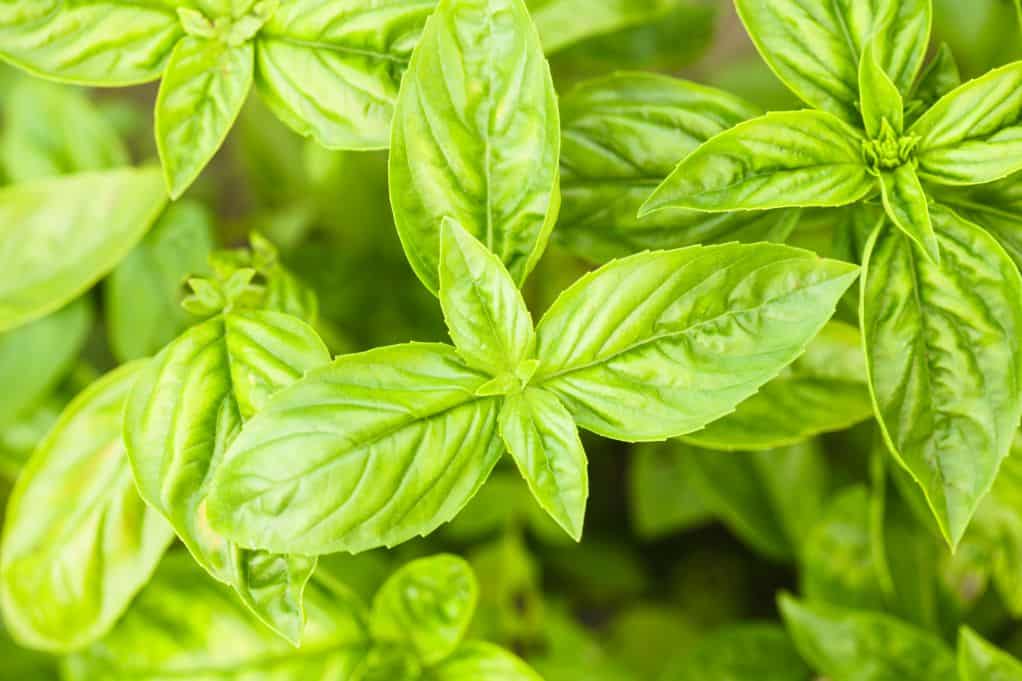
Clove basil is not only an excellent plant for your garden, but it is also a great way to keep snakes away. The firm, spicy scent of cloves is something that snakes really dislike.
Clove basil is easy to grow and does not require much care. It also smells great, so you will be able to enjoy the smell of your spice garden as well.
Planting clove basil around your yard’s perimeter will help keep snakes away from your property.
10) Tobacco
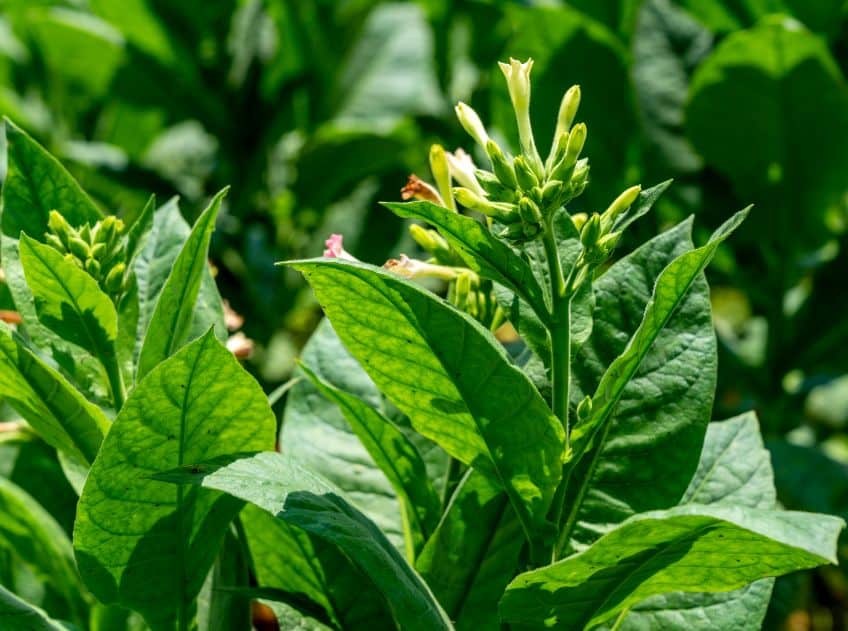
While many people consider tobacco a harmful substance, it can have some positive uses – like repelling snakes. Tobacco can be used in many ways to keep snakes away from your property.
For example, you can place tobacco in a jar and hang it from the ceiling. The smell of tobacco will discourage snakes from entering your home.
Or, you can put smoking in a spray bottle and use it to create a barrier around your property.
The pungent smell of the tobacco will repel snakes and keep them away from your yard. So, if you’re looking for a natural way to deter snakes, consider using tobacco.
FAQ:
What is the best plant to keep snakes away?
When it comes to keeping snakes away, there are a few plants that can do the job.
- One of the most effective is the peppermint plant. Snakes hate the smell of peppermint, so having a few of these plants around your property can help to keep them at bay.
- Another good option is garlic. Garlic is another plant that snakes hate, so planting some garlic bulbs around your property’s perimeter can also help keep them away.
- Finally, marigolds are also known to repel snakes. Marigolds produce a strong smell that snakes find unpleasant, so planting a few of these around your property can help to keep them away.
What attracts snakes in the first place?
Gardeners often find snakes in their gardens and wonder how they got there and what attracted them in the first place. Snakes are attracted to areas that provide food, shelter, and water. Gardens give all three of these things.
Snakes are predators and will often eat small rodents that live in grasslands. Parks also provide shelter for snakes because they offer dense vegetation, logs, and rocks that snakes can use for cover.
Lastly, gardens usually have a water source, such as a pond or stream, which is essential for a snake’s survival. By understanding what attracts snakes, gardeners can take steps to reduce the chances of snakes taking up residence in their garden.

